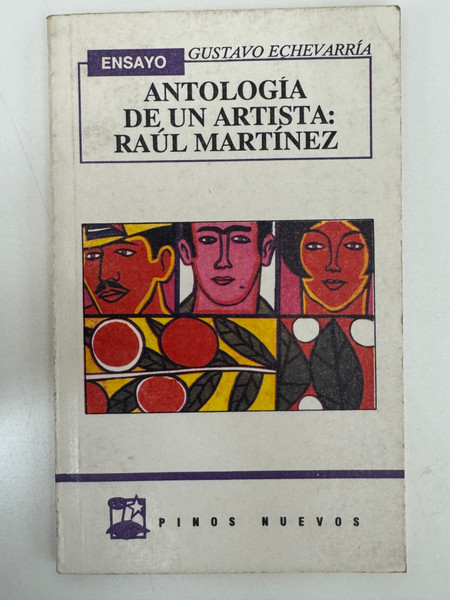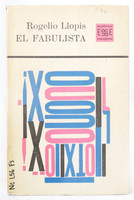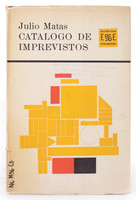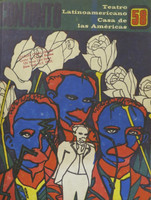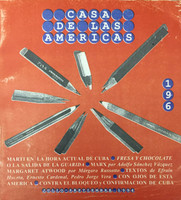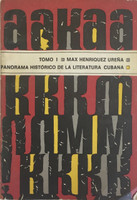- Travel
-
Exhibits
- La Portada Cubana
- Immortal Cuba: Artists Take on Their Heroes
- Seattle Poster Exhibit
- Sandra Dooley & Alejandrina Cué
- The Art of Wayacón
- Cuban Folk Art
- Cuba In Black And White
- 25 Years of Cuban Art Space
- Summer Folk Art Expo
- ¡SPRING AWAKENING FROM CUBA!
- Celebrating The Art Of Cuban Women
- Celebrating Paper, Affordable Art from Cuba
- Art of the Revolution
- Outsider Art
- Lost and Found
- En la lucha: Celebrating Cuban Women and Their Art
- Cuban Art Stash
- 100 Fires: 5 Cienfuegos Artists' Work on Paper
- Waya + Monte! Magic Realism in Cienfuegos
- Viva Cuba Viva! Poster Show
- Cultivando Sueños
- Black Lives Matter in Cuba Jan 9-March 27
- Leandro Soto: Crónicas visuales
- Cuban Canvas
-
Archive
- Global Reflection 2018: Spirit and Community
- Exhibit in the cloud: Contemporary Works on Paper
- MADE IN CUBA! MINNEAPOLIS EXHIBIT
- Cuban Posters and Photography from CCS collection
- AUTUMN SALE! Sept/Oct 2017
- SPRING ARTS AND CRAFT SALE
- Vuelo Directo/Non Stop: Alberto & Alejandro Lescay
- The Many Faces of Fidel
- Somos
- Made in Cuba!
- The US empire in Cuban graphics
- Made in Cuba/Seattle exhibit
- Entre Nos
- Looking Back
- Cuban Art Space
- Membership/Donate
- About Us
- Cuba News
-
Marcos D. Cabrera Sibianu's cover design for Gustavo César Echevarría's critical essay "Antología de un Artista: Raúl Martínez" features a reproduction of one of Raúl Martínez's iconic pop art compositions. The cover showcases a gridded arrangement of three faces rendered in bold colors—orange-red, pink, and coral—set against compartments of yellow, black, and geometric shapes including circles and abstract foliage forms. This arrangement exemplifies Martínez's characteristic fusion of portraiture with geometric abstraction and decorative patterning. The design's clean layout frames the artwork with a simple purple border containing the "ENSAYO" label and the author's name, allowing Martínez's vibrant composition to dominate the visual field. The purple and white color scheme creates a modernist elegance that was typical of Cuban book design in the Pinos Nuevos series, which published works for young Cuban audiences during the economically challenging Special Period of the 1990s.
This critical anthology represents one of the first comprehensive examinations of Raúl Martínez's artistic evolution and cultural significance within Cuban revolutionary art. Written by Gustavo César Echevarría (born 1967), an art historian who graduated from the University of Havana's Faculty of Arts and Letters in 1988, the essay traces Martínez's trajectory from his early abstract expressionist work through his pioneering adaptation of pop art aesthetics to revolutionary Cuban themes. The selection committee included prominent Cuban intellectuals Fernando Martínez, Max Figueroa, and the renowned poet Cintio Vitier, underscoring the book's scholarly importance. Echevarría, who would later become known as an artist under the name "Cuty Ragazzone," provides crucial documentation of Martínez's role in transforming Cuban visual culture through his work with ICAIC, Casa de las Américas, and the Cuban Book Institute. The essay examines Martínez's integration into movements like Los Once and Sociedad Nuestro Tiempo, his travels to the United States in the 1950s where he studied at the Chicago Institute of Design, and his subsequent development of a distinctly Cuban pop art vocabulary that celebrated revolutionary heroes while maintaining sophisticated formal experimentation.
Published by Casa Editora Abril's Pinos Nuevos imprint in 1994, this book emerged during Cuba's Special Period—a time of severe economic hardship following the collapse of the Soviet Union. Casa Editora Abril, founded on July 1, 1980, was the state publisher responsible for magazines and books aimed at Cuban children, adolescents, and young people, including iconic publications like Pionero, Zunzún, and El Caimán Barbudo. The Pinos Nuevos series took its name from José Martí's famous verse about the young pines that grow joyfully around the fallen trunk, symbolizing Cuba's new revolutionary generations. Significantly, this volume was printed in Buenos Aires, Argentina, by A.B.R.N. Producciones Gráficas in January 1994—a pragmatic solution to Cuba's printing limitations during this era of scarcity. The book includes epigraphs from both Martí and Manuel Ugarte, positioning Martínez's art within the broader context of Latin American cultural nationalism and anti-imperialism. This publication played a crucial role in preserving and disseminating knowledge of Martínez's contributions during a period when Cuban cultural institutions struggled to maintain their operations, ensuring that younger generations understood the artistic achievements of revolutionary Cuba's most important graphic designer and pop artist.
-
-
Discover More at the Center for Cuban Studies

